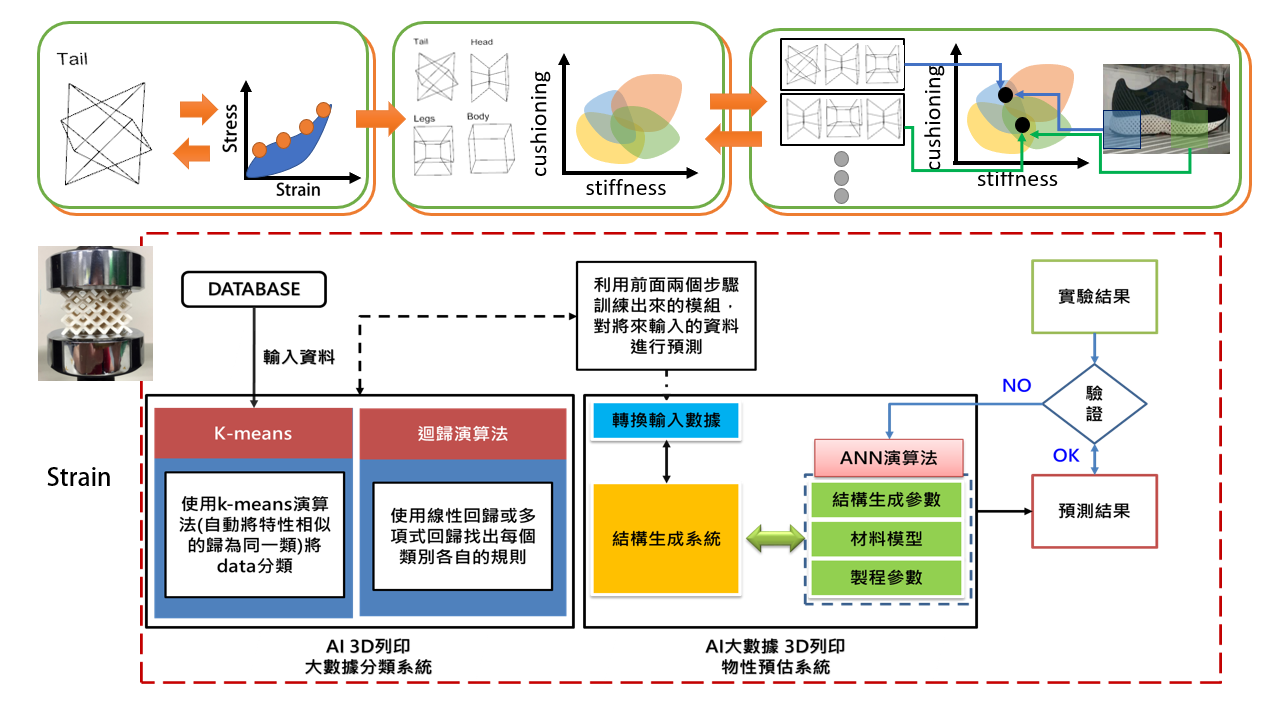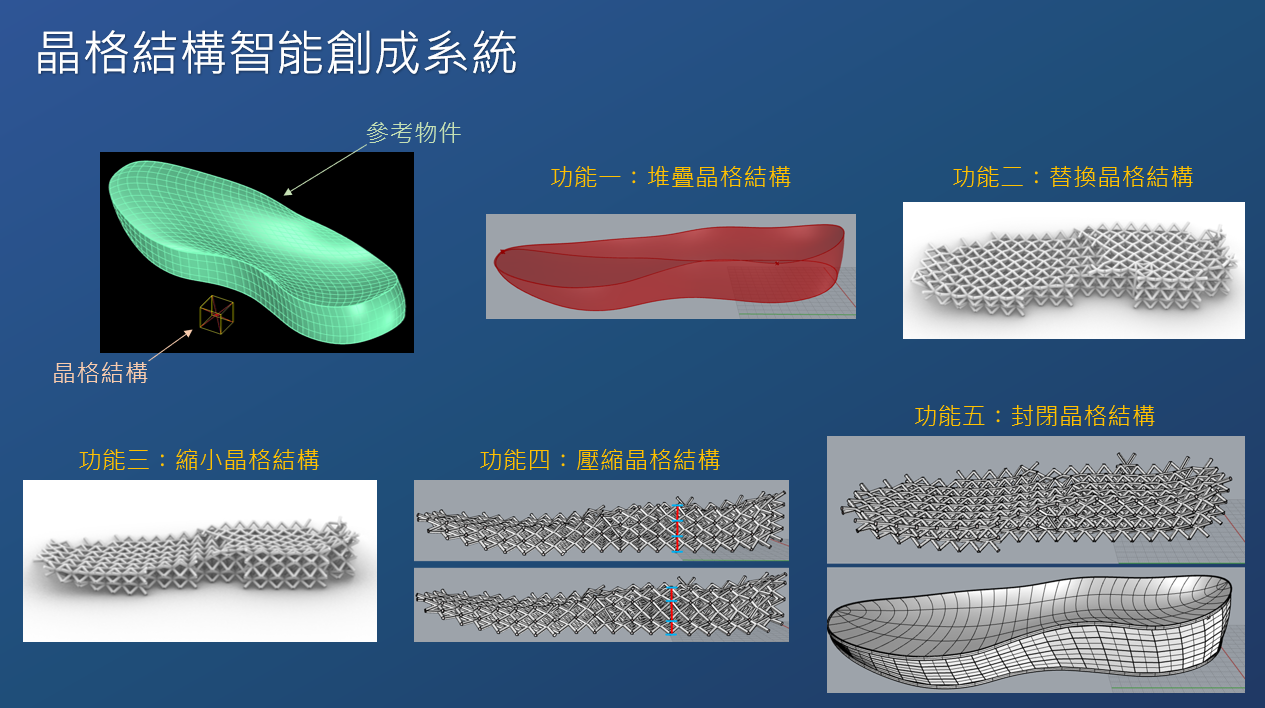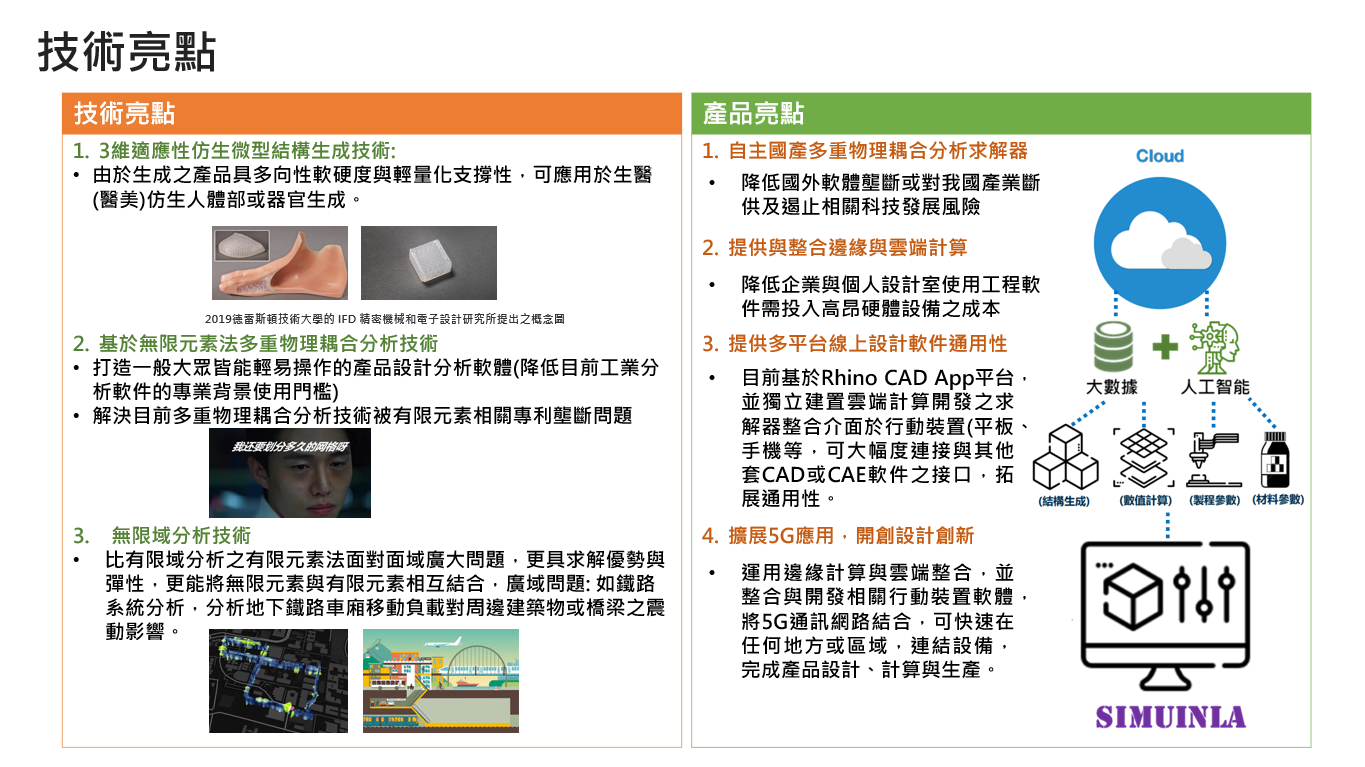| Technical Name | Algorithm-Driven Design: Using new algorithm and deep learning model to control the microstructures generation of favorable mechanical behavior (Static & Dynamic) in additive manufacturing. | ||
|---|---|---|---|
| Project Operator | National Chung Cheng University | ||
| Project Host | 劉德騏 | ||
| Summary | The use of microstructures has a benefit to change the mechanical behavior of objects such as: elasticity, stiffness, cushioning. Our researchers have developed a simulation system that could quickly and accurately to generation 3D microstructure models based on their mechanical behavior. The new system capable of generating microstructures based on the desired mechanical behavior of a customer product. The new design system use machine learning and infinite element method to catalogues the mechanical behaviors of a huge number of tiny cube clusters. In this research, proposed a framework that combined experiments, Infinite-element method (IEM), and NNs, we conducted actual experiments to validate IEM simulation. Next, IEM was used to run multiple simulation samples based on a different parametric combination of global loads, displacement and strut radius, and cell stiffness. These are the NN input features, and the outputs are the Strain Energy and equivalent principal stresses. |
||
| Scientific Breakthrough | We have successfully developed an algorithm to generate closed surfaces from the 1D beam element and then converted it into a three-dimensional solid structure. Its molding success rate has been higher than the current international market software. This software technology can provide designers with 1D beam elements converted into 3D solid structures, used to import dynamic analysis software, obtain key parameters, and optimize dynamic product structure generation. At present, it has been applied to the generation of microstructures for impact resistant structures of safety helmet linings and has applied for patents. |
||
| Industrial Applicability | The design of 3d printing microstructures brings possibilities of realizing novel properties beyond traditional materials and the use in different domains such as robot, aeronautics, biomedicine, sport, based on their deformation, compression, light sound and thermal mechanical properties. In 3D printing software system market, This rapid growth is analysed and implications evaluated in the recent market intelligence report from IDTechEx Research: 3D Printing Software 2018-2028: Technology and Market Analysis. Given these market trends, IDTechEx forecasts that the global market for 3D printing software will be worth $966 million by the year 2028. |
||
| Keyword | 3D printing microstructures structural lattices machine learning Infinite-element method (IEM) neural network Static & Dynamic algorithm biomedical applications sports protective equipment applications | ||
- d97420010@gmail.com
other people also saw







